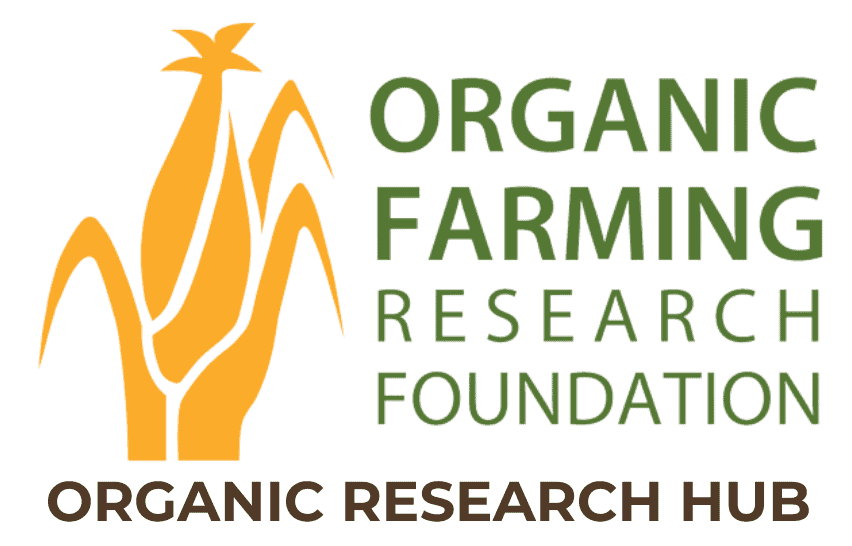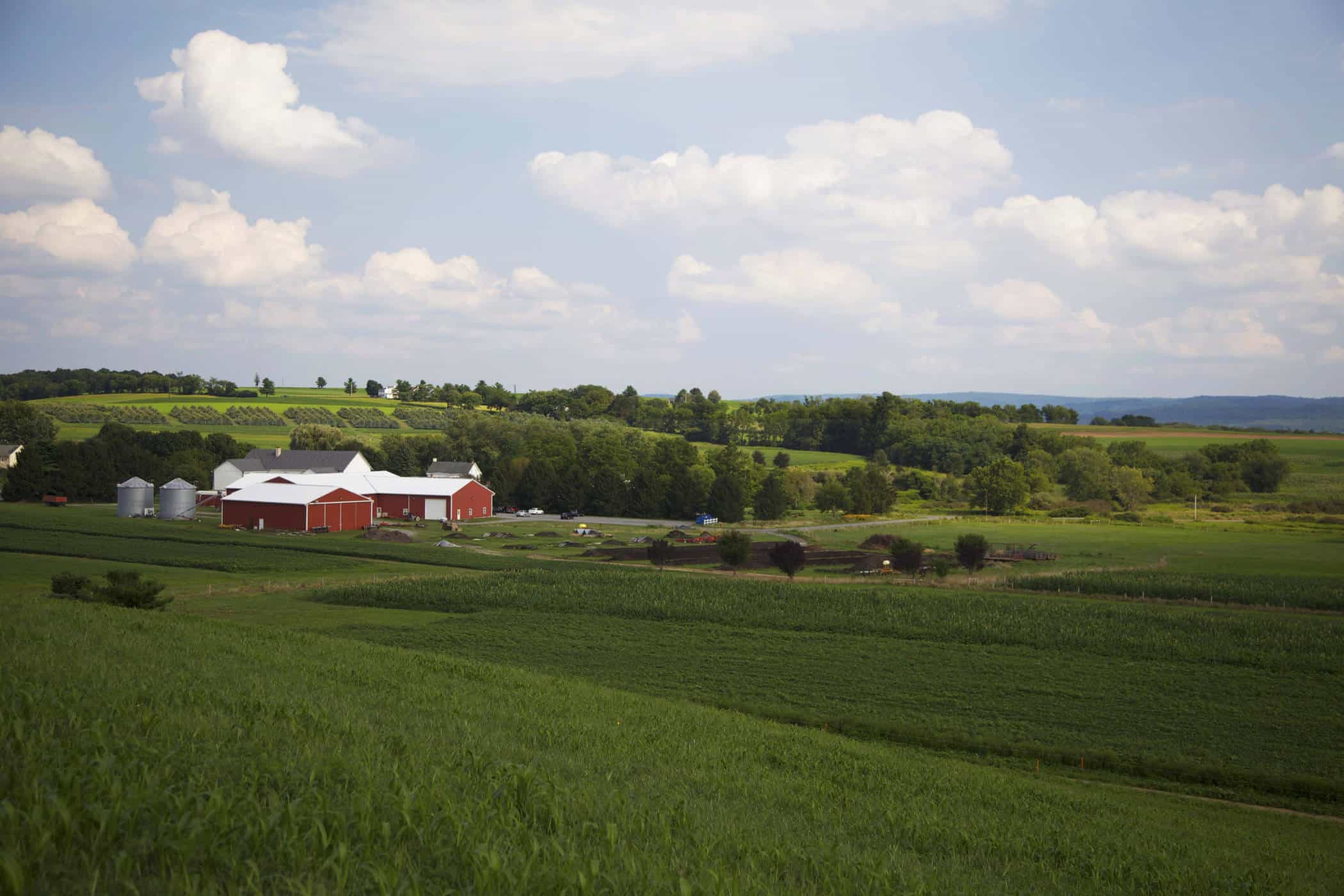Soil Fertility and Crop Yields in Long-Term Organic and Conventional Cropping Systems in Eastern Nebraska
Project Director: Sam Wortman, University of Nebraska-Lincoln
Project Overview
The Long-Term Crop Rotation experiment at the Agricultural Research and Development Center in Mead, NE is one of the United States’ longest-running studies comparing the soil health impacts and yield outcomes of conventional and organic field crop agriculture. The experiment, initiated in 1975 and redesigned in 1996, provides valuable insights into the long-term soil health impacts, environmental benefits, and economic potential of organic cropping systems.
This resource provides a summary of some of the key findings from the 13 years after the 1996 experimental redesign (1996-2008).

Farmer Takeaways
- Long-term organic management enhances soil nutrient concentrations, including soil organic matter (SOM), P, K, Ca, Mg, and Zn.
- Increased weed pressure in organic systems may diminish the potential yield benefits associated with increased soil nutrient concentrations; as such, weed management remains a priority for organic producers.
- Corn, sorghum, and soybean yields were lower in organic systems than in conventional systems, but winter wheat and alfalfa yields were greater than or equal to conventional yields, highlighting the competitiveness of these crops in Nebraska organic crop rotations.
- Including a forage crop (i.e., alfalfa) into an organic cropping rotation may speed the accumulation of SOM by reducing tillage-induced soil disturbance.
Project Objectives and Approach
To determine the effects of long-term management and cropping system (organic vs. conventional) on soil chemical and physical properties
- Four cropping system treatments were established, each of which followed a four-year rotation. These treatments included:
- Conventional (CR): corn or sorghum/soybean/corn or sorghum/soybean
- Diversified Conventional (DIR): corn or sorghum/corn or sorghum/soybean/winter wheat
- Animal Manure-Based Organic (OAM): soybean/corn or sorghum/soybean/wheat
- Forage-Based Organic (OFG):alfalfa/alfalfa/corn or sorghum/wheat
- Soil analyses were conducted at the beginning of the experiment to determine initial differences in soil properties attributable to the different management practices from Stage 1 of the experiment (<1996).
- Both conventional treatments (CR, DIR) received synthetic N and P fertilization (~120kg N/ha, ~40kg P/ha) during the spring corn and sorghum rotations, and weed management for these treatments included a combination of cultivation and herbicides.
- Both organic treatments (OAM, OFG) received supplemental N and P in the form of semi-composted bovine manure, with application rates for OAM based on corn and sorghum crop N demands and rates for OFG based on potential P deficiency. Weed management for these treatments included cultivation.
- Soil samples were collected at the beginning of each four-year rotation cycle (1996, 2000, 2004, and 2008) and analyzed for pH, soil organic matter (SOM), P, K, Ca, Mg, Na, SO4, and Zn.
To determine the effects of long-term management and cropping system (organic vs. conventional) on grain yield
- Grain and alfalfa were harvested from a sample in each plot at the end of each growing season, analyzed and adjusted for moisture content, and dry yields estimated.
Key Findings
Long-term organic management practices (including animal manure application) may result in soils with higher P, K, Ca, Mg, and Zn than soils that are managed conventionally
- P concentrations were higher in the organic treatment soils (OAM, OFG) than in the conventional treatment soils (CR, DIR) between 1996 and 2008, with the animal manure-based treatment (OAM) consistently having the highest P concentrations.
-
-
- Initial differences between treatments may be attributable to differences in management practices during the first stage of the trial; however, between 1996 and 2008, soil P concentrations increased for both organic treatments (statistically for OAM, numerically for OFG) while remaining constant for both conventional treatments, suggesting that organic management practices may result in the accumulation of soil P over time.
-
-
- Soil levels of Ca, K, Mg, and Zn were generally higher for the organic treatments than for the conventional treatments between 1996 and 2008, with K concentrations increasing over time.
Long-term organic management may result in significantly higher soil organic matter (SOM) levels than conventionally-managed systems, with the inclusion of a forage crop rotation resulting in SOM accumulation over time
- SOM was significantly greater in the organic treatments than in the conventional treatments between 1996 and 2008.
- Whereas SOM levels remained relatively stable throughout the trial period for both conventional treatments and the animal manure-based organic treatment (OAM), SOM increased in the forage-based organic treatment (OFG), indicating that the inclusion of a multi-year forage crop (i.e. alfalfa) rotation, which reduces tillage, may aid in the accumulation of SOM over time.
Corn, sorghum, and soybean yields were greater in the conventional treatments than in the organic treatments, but wheat yields were higher in the animal manure-based organic treatment
- Compared to the yield average from both conventional treatments, the animal manure-based organic treatment yielded 87% as much corn, 84% as much sorghum, and 80% as much soybean. The forage-based organic treatment yielded 67% as much corn and 73% as much sorghum. These yield reductions were likely the result of increased weed pressure in organic systems.
- Wheat yields were 110% greater in the animal manure-based organic system than in the diversified conventional system, suggesting that wheat may be a more competitive crop for Nebraskan organic producers.
Resources
Wortman, S. E., Galusha, T. D., Mason, S. C., & Francis, C. A. (2012). Soil fertility and crop yields in long-term organic and conventional cropping systems in Eastern Nebraska. Renewable Agriculture and Food Systems, 27(3), 200–216.
Read MoreLocation
NebraskaCollaborators
Tomie Galusha, University of Nebraska-Lincoln
Stephen Mason, University of Nebraska-Lincoln
Charles Francis, University of Nebraska-Lincoln
Region
Plains
Topic
Soil Health, Crop Nutrient Management, Cropping Systems
Category
Grain and Field Crops
Year Published
2011



